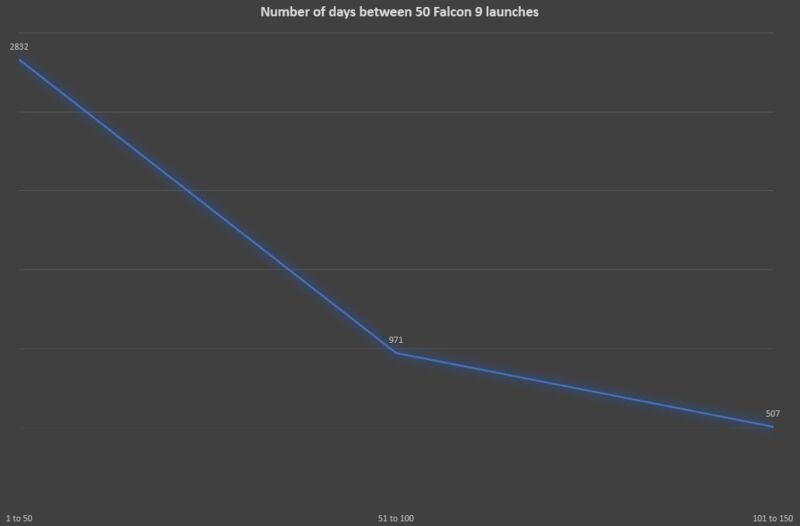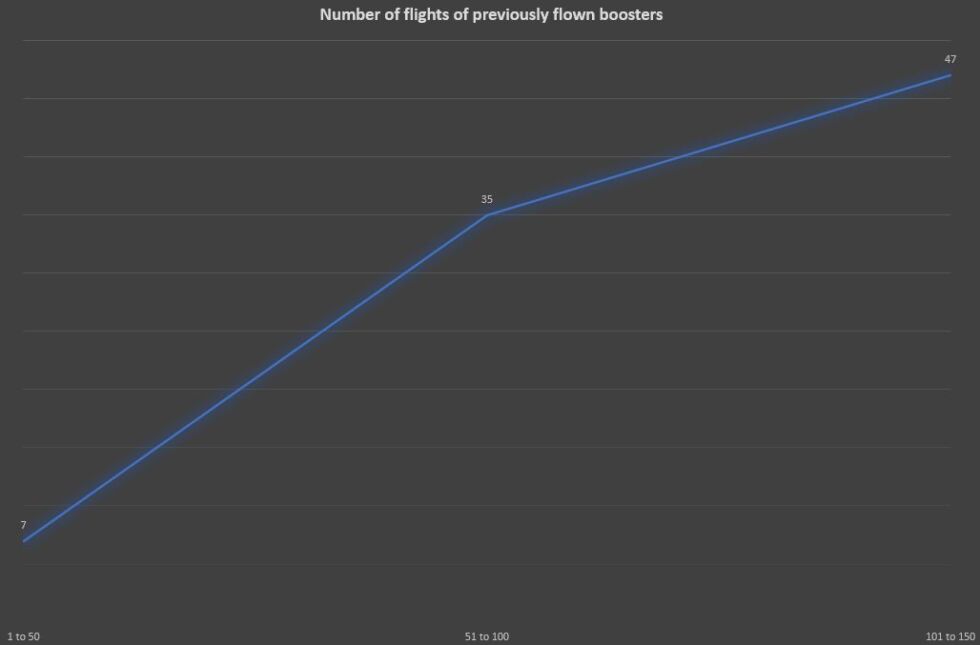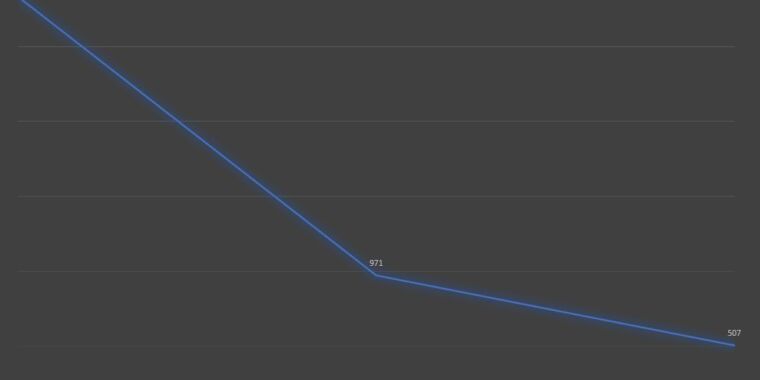
Eric Berger
SpaceX launched its first Falcon 9 rocket on June 4, 2010, nearly a dozen years ago. During those early years, the company struggled with a host of challenges, from seemingly simple things like trying to transport the rocket over land rather than by sea or air to more demanding tasks like producing enough Merlin engines.
The company’s first 50 flights took nearly eight years to complete, during which time SpaceX engineers and technicians learned a lot about building large rockets, testing and transporting them, and then flying them. From 2010 to early 2018, SpaceX would make three major “block” upgrades to the rocket, as well as introducing the Falcon Heavy variant of the booster.
During this learning period of activity, SpaceX managed to launch a Falcon 9 rocket only every 56.6 days. When it started experimenting with the reuse of the first stage, out of the first 50 launches, there were seven on recycled rockets. Also during this learning period, SpaceX had one launch failure, CRS-7 in 2015, and one failure during pre-launch activities, the Amos-6 accident in 2016.
The company has not had a failed launch of the Falcon 9 since, and earlier this year the rocket set the record for the most consecutive successes ever by an orbital rocket.
Second 50 days
The company took advantage of these lessons. SpaceX launched its 51st rocket on March 30, 2018 and flew its 100th on November 25, 2020. During this time, the company began flying the rocket more frequently, with an average launch every 19.4 days. And of these 50 launches, 35 were reused.
Probably the most important milestone during this period was the company’s 54th launch: a commercial satellite from Bangladesh. This mission saw the debut of the “Block 5” version of the Falcon 9 rocket, which included several improvements to optimize the rocket for reuse.
For example, the Block 5 version included modifications such as improved thermal shielding around the Merlin engines, unpainted components to save mass, and changes to the octaweb structure that holds the engines so they can be inspected, refurbished and tested more quickly.
“For those who know rockets, this is a ridiculously difficult thing,” said SpaceX founder Elon Musk in 2018, at the debut of Block 5. “It’s taken us since, man, since 2002. Sixteen years of extreme effort and many , many iterations and thousands of small but significant development changes to get to where we think it is even possible.”
Third 50 days
SpaceX launched its 101st mission on December 6, 2020 to deliver cargo to the International Space Station. It flew its 150th Wednesday, launching the Crew-4 mission for the US space agency, carrying four astronauts to the International Space Station.
During this time, SpaceX has exclusively flown the Block 5 version of the Falcon 9 rocket, launching a booster every 10.1 days on average. Notably, of the company’s last 50 rocket launches, 47 have used a previously flown first stage booster.

Eric Berger
In recent years, SpaceX has made relatively few technical iterations on its Falcon 9 workhorse, but the company has continued to learn about the optimal refurbishment of boosters. For example, it has now flown two different first legs ten times each and will likely continue to push these “fleet leaders” further to find the limits of reuse.
SpaceX has also learned to orbit the vehicle quickly. Two days after its 150th launch, the company will make its 151st today, Friday, April 29. This Starlink launch will feature a booster flown five times before, including the most recent launch of the Axiom-1 mission into orbit. That crew flight took place just 21 days ago, so SpaceX has managed to cut the renovation period down to just three weeks.

